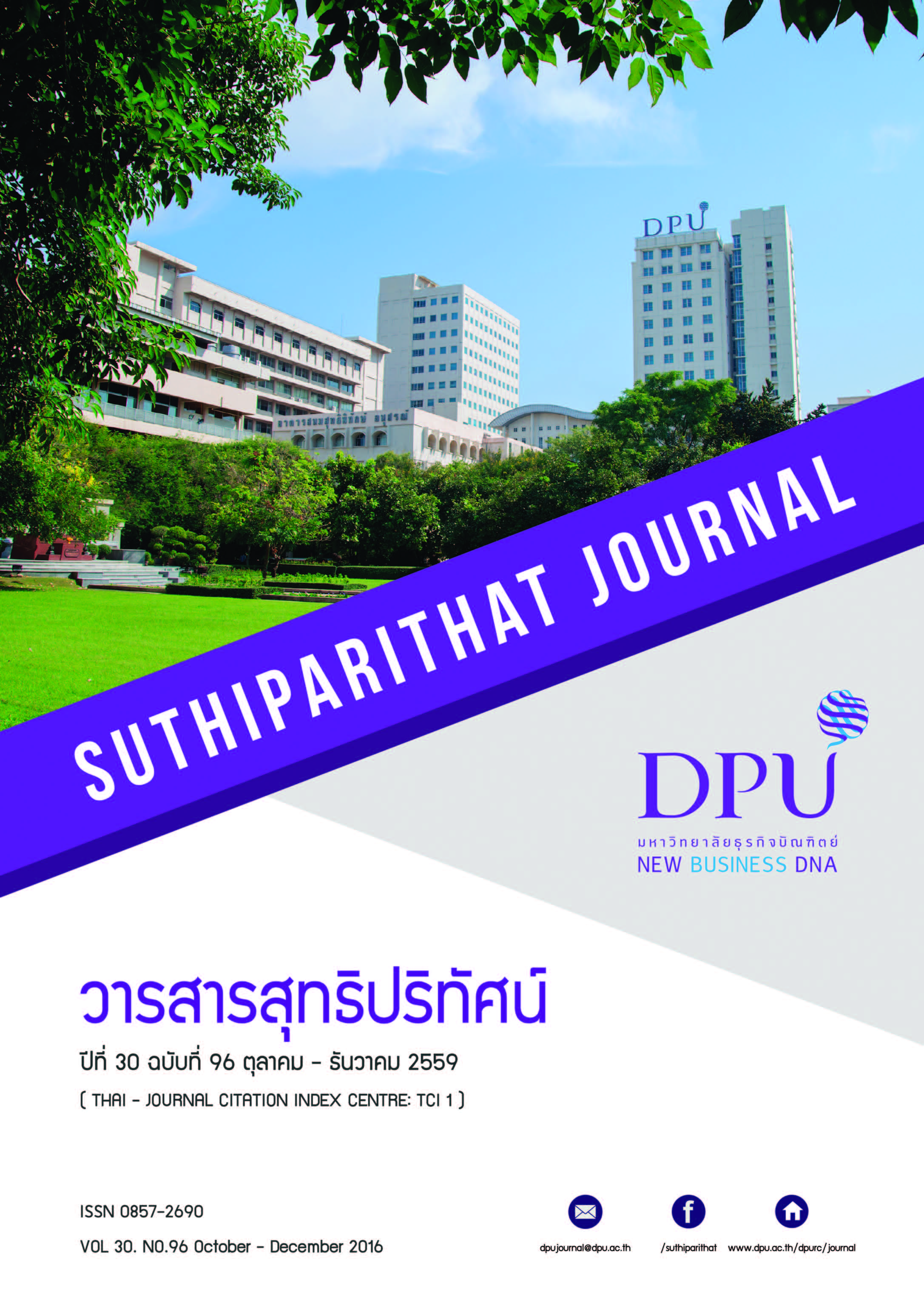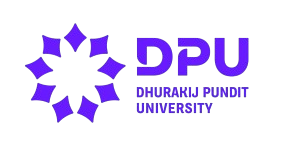รูปแบบการพัฒนาสมรรถนะทางการบริหาร สำหรับผู้บริหารสถานศึกษาของกองทัพอากาศ
คำสำคัญ:
สมรรถนะ, สมรรถนะทางการบริหาร, ผู้บริหารสถานศึกษากองทัพอากาศบทคัดย่อ
การวิจัยในครั้งนี้มีวัตถุประสงค์เพื่อ 1) ศึกษาถึงสมรรถนะทางการบริหารที่พึงประสงค์สำหรับผู้บริหารสถานศึกษาระดับกลางของกองทัพอากาศในปัจจุบัน 2) ศึกษาวิธีการพัฒนาสมรรถนะทางการบริหารสำหรับผู้บริหารสถานศึกษาระดับกลางของกองทัพอากาศในปัจจุบัน 3) ค้นหารูปแบบเพื่อพัฒนาสมรรถนะทางการบริหารที่พึงประสงค์สำหรับผู้บริหารสถานศึกษาระดับกลางของกองทัพอากาศ โดยการผสมผสานวิธีวิจัยเชิงปริมาณ และวิจัยเชิงคุณภาพ โดยวิธีวิจัยเชิงปริมาณมีขนาดประชากร จำนวน 427 คน คือ ผู้บริหารสถานศึกษาที่เป็นข้าราชการชั้นสัญญาบัตรที่ปฏิบัติงานในสถานศึกษาของกองทัพอากาศ และ กลุ่มตัวอย่าง จำนวน 207 คน ด้วยวิธีการสุ่มตัวอย่างแบบง่าย มีเครื่องมือการวิจัยเป็นแบบสอบถาม ที่ผ่านความเห็นชอบของผู้ทรงคุณวุฒิจากการตรวจสอบความตรงเชิงเนื้อหาและการหาค่าดัชนี ความสอดคล้อง (IOC) ซึ่งมีค่าเท่ากับ 1.00 และวิธีการหาความเชื่อมั่นโดยการหาค่าสัมประสิทธิ์อัลฟา ของครอนบาค ได้เท่ากับ 0.991 ใช้การวิเคราะห์ข้อมูลด้วยสถิติเบื้องต้น โดยการหาค่าความถี่ร้อยละ ค่าเฉลี่ย และส่วนเบี่ยงเบนมาตรฐาน การวิเคราะห์องค์ประกอบใช้วิธีการสกัดองค์ประกอบหลัก (PCA) และเลือก วิธีการจัดกลุ่มองค์ประกอบโดยหมุนแกนตามวิธีการ Varimax โดยพิจารณาความเหมาะสมในการวิเคราะห์ องค์ประกอบจากค่าสัมประสิทธิ์ KMO และวิเคราะห์องค์ประกอบเชิงยืนยัน โดยการทดสอบตัวแบบสมการ โครงสร้าง (Structure Equation Model: SEM) สำหรับวิธีวิจัยเชิงคุณภาพ กลุ่มตัวอย่างได้จำแนกออกเป็น 2 กลุ่มดังนี้ กลุ่มที่ 1 คือ ผู้ให้ข้อมูลหลัก ซึ่งเป็นผู้ทรงคุณวุฒิที่เป็นผู้บริหารสถานศึกษาในกองทัพอากาศที่เลือกอย่างเจาะจง จำนวน 12 คน และกลุ่มที่ 2 คือ ผู้ร่วมสนทนากลุ่ม จำนวน 10 คน มีเครื่องมือการวิจัยเป็นแบบสัมภาษณ์กึ่งโครงสร้างที่ผ่านความเห็นชอบของผู้ทรงคุณวุฒิจากการตรวจสอบความตรงเชิงเนื้อหาและการค่าดัชนีความสอดคล้อง (IOC) และใช้วิธีการตรวจสอบข้อมูล วิเคราะห์เนื้อหา และ นำมาสังเคราะห์ วิธีการพัฒนาสมรรถนะทางการบริหาร และรูปแบบเพื่อพัฒนาสมรรถนะทางการบริหาร สำหรับผู้บริหารสถานศึกษาระดับกลางของกองทัพอากาศ
ผลการวิจัยพบว่า 1) ผลวิธีการสกัดองค์ประกอบแบบ PCA และผลการวิเคราะห์องค์ประกอบเชิงยืนยัน โดยการทดสอบตัวแบบสมการโครงสร้าง ตามวัตถุประสงค์ที่ 1 พบว่าดัชนีวัดความสอดคล้องกลมกลืนที่สำคัญอยู่ในเกณฑ์ที่กำหนดคือ ค่าสถิติไค-สแควร์ = 53.030, P-Value = 0.081, RMSEA = 0.040, GFI = 0.960, AGFI = 0.930, CN = 236.520 สรุปได้ว่า ตัวแปรแฝงภายในขององค์ประกอบเพื่อพัฒนาสมรรถนะการบริหารสำหรับผู้บริหารสถานศึกษากองทัพอากาศ ประกอบด้วย ตัวแปรสังเกตได้ 11 ตัวแปร คือ 1. สมรรถนะด้านภาวะผู้นำ 2. สมรรถนะด้านลักษณะบุคลิกภาพ 3. สมรรถนะด้านทักษะการสื่อสาร 4. สมรรถนะด้านมนุษย์สัมพันธ์ 5. สมรรถนะด้านการปฏิบัติงานเป็นทีม 6. สมรรถนะด้านการสร้างแรงจูงใจ 7. สมรรถนะด้านทักษะการสอน 8. สมรรถนะด้านการวิจัย 9. สมรรถนะด้านการบริหารวิชาการ 10. สมรรถนะด้านการบริหารทางการบริหาร และ 11. สมรรถนะด้านจริยธรรม โดยมีความเชื่อมั่นของตัวแปรแฝงตั้งแต่ 0.31 - 0.87 โดยค่าน้ำหนักองค์ประกอบมาตรฐานของตัวแปร สังเกตได้ที่เป็นตัวบ่งชี้มีค่าตั้งแต่ 0.41 – 0.54 ตัวแปรสังเกตที่มีค่าความเชื่อมั่นต่ำที่สุดคือ สมรรถนะด้านการวิจัย ตัวแปรที่มีค่าความเชื่อมั่นมากที่สุดคือ สมรรถนะด้านการบริหารวิชาการ 2) จากการตรวจสอบและวิเคราะห์ข้อมูลเชิงคุณภาพ โดยการวิเคราะห์เชิงกลยุทธ์ได้วิธีการพัฒนาสมรรถนะทางการบริหารสำหรับผู้บริหารสถานศึกษาของกองทัพอากาศทั้ง 10 สมรรถนะ ในรูปแบบของแผนเชิงกลยุทธ์ ซึ่งประกอบด้วย กลยุทธ์หลักจำนวน 37 กลยุทธ์ กลยุทธ์ย่อยจำนวน 73 กลยุทธ์และตัวชี้วัดจำนวน 124 ตัว และ 3) ผลการศึกษาข้อมูลและแนวคิดจากเอกสารประกอบกับการวิเคราะห์และสังเคราะห์ข้อมูลที่ได้จาก การสัมภาษณ์ การสนทนากลุ่มและแบบสอบถามความคิดเห็น ได้รูปแบบการพัฒนาสมรรถนะทางการบริหารสำหรับผู้บริหารสถานศึกษาระดับกลางของกองทัพอากาศ ในรูปแบบของชุดความสัมพันธ์ขององค์ประกอบซึ่งเริ่มต้นจากต้องมีแผนกลยุท์โดยกำหนดเป้าประสงค์ที่ชัดเจน มีองค์ประกอบหลักสมรรถนะ โดยใช้กลยุทธ์การพัฒนาสมรรถนะจากผลการวิจัยเป็นพื้นฐาน เน้นเนื้อหาวิชา/กิจกรรมร่วม เน้นบุคลากรผู้ให้การฝึกอบรม มีการจูงใจผู้เข้าฝึกอบรม มุ่งสู่ตัวชี้วัด KPI และมีการรายงานผลต่อกันอย่างสม่ำเสมอ เพื่อพัฒนาอย่างยั่งยืน ซึ่งหน่วยงานที่เกี่ยวข้องที่รับผิดชอบประกอบด้วย กรมกำลังพลทหารอากาศ ศูนย์ทดสอบบุคคล หน่วยงานผู้รับผิดชอบในการจัดการฝึกอบรม สถานศึกษาทั้ง 4 ประเภท ทั้งนี้เพื่อ ความพร้อมด้านบุคลากรของทหารอากาศ
เอกสารอ้างอิง
กองทัพอากาศ. (2551). ยุทธศาสตร์กองทัพอากาศ พ.ศ.2551-2562 (ฉบับปรับปรุง พ.ศ. 2557). สืบค้น 15 กันยายน 2557, จาก http://imgcdn.rtaf.mi.th/2557/admin/rtaf_25570422143206.pdf
จารุพงศ์ พลเดช. (2551). ผลงานการพัฒนาจังหวัดตามแนวขุมทรัพย์สมเด็จพระนารายณ์มหาราช รอบ 12 เดือน (1 ตุลาคม 2550 - 30 กันยายน 2551) จังหวัดลพบุรี. ลพบุรี :ลพบุรี ออฟเซต.
ดนัย เทียนพุฒ. (2543). การบริหารทรัพยากรบุคคลในศตวรรษหน้า. กรุงเทพฯ: จุฬาลงกรณ์มหาวิทยาลัย.
สมหวัง พิธิยานุวัฒน์. (2543). ข้อเสนอนโยบายการปฏิรูปวิชาชีพครูตามพระราชบัญญัติการศึกษาแห่งชาติ. กรุงเทพฯ : สำนักงานปฏิรูปการศึกษาคณะกรรมการการศึกษาแห่งชาติ สำนักนายกรัฐมนตรี.
สำนักงานคณะกรรมการพัฒนาการเศรษฐกิจและสังคมแห่งชาติ. (2554). แผนพัฒนาเศรษฐกิจและสังคมแห่งชาติ ฉบับที่ 11. กรุงเทพฯ: สำนักงานคณะกรรมการพัฒนาการเศรษฐกิจและสังคมแห่งชาติ, สำนักนายกรัฐมนตรี.
สำนักงานคณะกรรมการพัฒนาระบบราชการ (ก.พ.ร.). (ม.ป.ป.). ชุดเครื่องมือการพัฒนาองค์การ (Organization Improvement Toolkits) ตามแนวทางการพัฒนาคุณภาพการบริหารจัดการภาครัฐ. สืบค้น 17 พฤศจิกายน 2557, จาก http://www.dnp.go.th/Desystem/G3.pdf
สุพานี สฤษฎ์วานิช. (2544). การบริหารเชิงกลยุทธ์. ปทุมธานี :มหาวิทยาลัยธรรมศาสตร์.
Certo, S. & Peter, J. (1988). Strategic Management. New York: Random House.
Clausewitz, C. V. (1984). On war. Upper Saddle River, NJ: Princeton University.
Mintzberg, H., & Quinn, J. B. (1996). The strategy process: Concepts, contexts, cases. Upper Saddle River. NJ: Prentice-Hall.
ดาวน์โหลด
เผยแพร่แล้ว
รูปแบบการอ้างอิง
ฉบับ
ประเภทบทความ
สัญญาอนุญาต
เนื้อหาและข้อมูลในบทความที่ลงตีพิมพ์ในวารสารสุทธิปริทัศน์ ถือเป็นข้อคิดเห็นและความรับผิดชอบของผู้เขียนบทความโดยตรงซึ่งกองบรรณาธิการวารสาร ไม่จำเป็นต้องเห็นด้วย หรือร่วมรับผิดชอบใด ๆ
บทความ ข้อมูล เนื้อหา รูปภาพ ฯลฯ ที่ได้รับการตีพิมพ์ในวารสารสุทธิปริทัศน์ ถือเป็นลิขสิทธิ์ของวารสารสุทธิปริทัศน์หากบุคคลหรือหน่วยงานใดต้องการนำทั้งหมดหรือส่วนหนึ่งส่วนใดไปเผยแพร่ต่อหรือเพื่อกระทำการใด ๆ จะต้องได้รับอนุญาตเป็นลายลักษณ์อักษรจากวารสารสุทธิปริทัศน์ก่อนเท่านั้น







